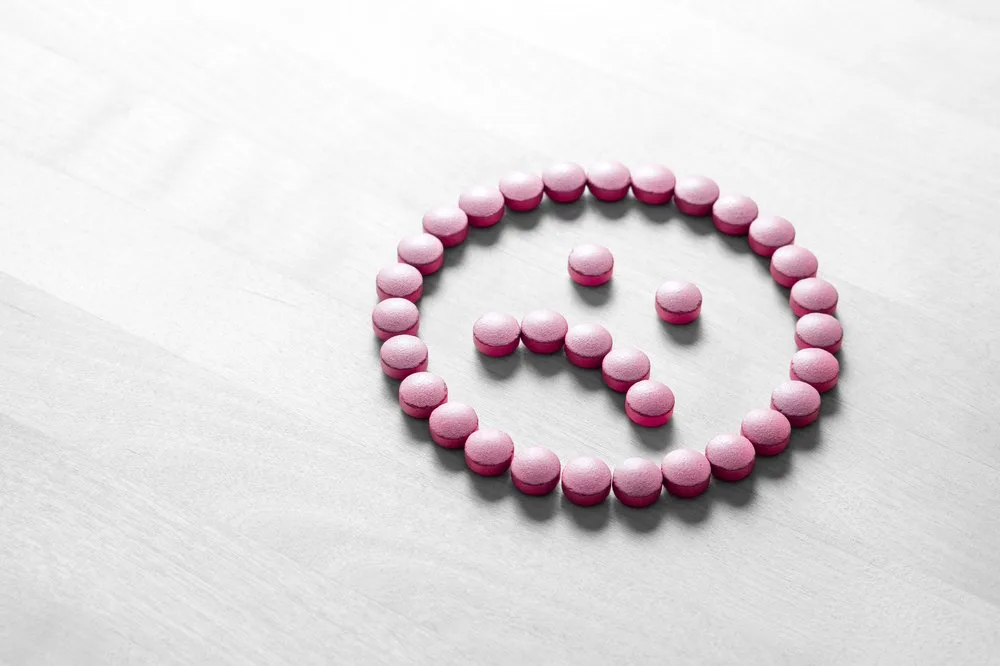300 million. This figure, according to the World Health Organization, represents the global number of people currently suffering from the debilitating disease that is depression. Taking into account current statistics relating to suicide – along with the way the world is starting to look at mental health and issues such as anxiety and loneliness – there’s much the family unit
can do to support their members when they’re going through difficult times. An important place to start is to define exactly what depression looks like in specific life stages.
Adolescence
We often picture the stereotypical teenager as one who goes through moody episodes and sometimes engages in strange behaviors. This tends to put a strain on the relationships between family members. However, it often goes beyond that.
Marilyn Davis-Shulman is a clinical psychologist practicing in Johannesburg. She points out that the developmental stage that is termed adolescence is a turbulent time. That’s because there are exponential changes taking place that have been unparalleled since toddlerhood. Aside from a surge in hormone production, this rapid change is driven by a period of tremendous growth in the adolescent brain. Also, distinct shifts and changes occur in the body, emotions, and thinking (cognitions) of the adolescent.
Other reasons for depression at this age include the pressure to perform at school or in a social context, and relationship stress. Besides, teenagers, today need to deal with a whole new social setup.
The connection between social media and mental health issues
Steven Spielberg said: “Technology can be our best friend, and technology can also be the biggest party-pooper of our lives.” It seems he had a point. Social media presents a picture that is not necessarily true, but, unfortunately, it has an impact on how we view ourselves in relation to people we don’t even know. If you are a vulnerable teenager suffering from low self-worth, you are likely going to be in the firing line for never feeling enough. Moreover, recent studies indicate that there is a definite link between social-media use and an increase in both loneliness and depression.
One of the studies was published in the Journal of Social and Clinical Psychology. Researchers randomly assigned 143 undergraduates at the University of Pennsylvania in the US to decrease their daily social-media use. The undergraduates were asked to limit their use of Facebook, Instagram, and Snapchat to just 10 minutes each day for three weeks. Meanwhile, a control group could continue their social-media use as normal. At the beginning of the trial, the researchers took baseline readings for wellbeing in a variety of areas. These included depression, self-esteem, acceptance, and fear of missing out (known as FOMO).
By the end of three weeks, the results clearly showed the negative effects of social media.
In the experimental group, loneliness and depression were reduced significantly. There was also a strong decrease in feelings of anxiety and FOMO when compared to the control group. Interestingly enough, the greatest changes took place in those with the highest reported levels of depression. Jordyn Young is a co-author of the paper and a senior at the University of Pennsylvania. She said the results point to the fact that decreased social-media use is what causes that qualitative shift in wellbeing. “Before this, all we could say was that there is an association between using social media and having poor outcomes with wellbeing.”
Besides, there’s the factor of addiction.
Let’s say someone opens their Instagram app. They see that 125 people liked a picture they posted half an hour ago. Also, there are five positive comments on the post. Immediately, the feel-good hormone dopamine is released in their brain.
On top of that, platforms such as Pinterest, Tumblr, Snapchat, and Instagram showcase attractive, exciting images and videos of everything that young people want. Amazing holidays, shiny cars, tanned and toned bodies. Yummy-looking dishes, gorgeous homes, and décor, to name a few.
Remember, the attention of the user is what is being sold on these apps.
That’s what is being bought by the advertisers pushing their products in between posts. Each app is designed to keep us coming back for more. Throw in the notifications the person receives even when they’re not on the app, and they will want to return – again and again.
The same principle applies to other forms of screentime technology, such as gaming. According to Dr. Ryan Fuller, who specializes in geriatric psychiatry, these forms of technology today are causing certain brain patterns to develop in young people. “We know that dopamine is released whenever an unpredictable reward is a possibility, such as with gaming. This is no different from gambling or sex addiction.”
Now that you know about it in detail, you can see how anxiety sources have changed in the last couple of years. However, the way it should be treated has not changed, despite all the research and their results available today. For more education regarding professional care, visit Peaceful Mind Psychology.
What developers are doing to improve the situation:

Photo by Rahul Chakraborty UNSPLASH
Thankfully, smartphone developers are acknowledging the issues caused by these devices. In doing so, they have come up with new settings that can help you monitor your social media use. By setting up your smartphone, for example, to allow 30 minutes of social media a day, you can become more mindful of how much time you’re spending on which platforms and when. Then there’s the other matter to consider. Today, young people are performing searches and following users on social media platforms that promote self-harm and mental-health issues or glorify eating disorders.
Thankfully, platforms such as Tumblr have been monitoring users for a few years now.
They take care to remove these sites to prevent the spreading of harmful posts. More recently, the platforms have stopped users when they search for posts with words or tags that are negative. If you type in words like “thinspo”, “depression”, “skinny”, “cutting” or “pro-ano”, your search will be stopped by a message. This message warns the user of potential negative health effects. “If you’re going through something difficult, we’d like to help,” says the message delivered by Instagram following such a search.
With that in mind, it’s important to remember that technology and social media still produce harmful content all the time. Also, it’s still designed to stir up impulses in our minds. For us to protect our mental health, we need to understand how these platforms work and how to use the ones we prefer responsibly.
“We need to learn from a young age how to manage these impulses,” says Fuller. “Your children will be exposed to these platforms at some point or another. You do them a disservice if you don’t teach them responsible interaction with technology, especially with how it’s going to change in the future.”
After we’ve given birth
Postnatal depressive symptoms are not the same as the “baby blues”, which often pass after a few weeks. The symptoms can be quite extreme. Also, they don’t occur because of something a mother does or doesn’t do. According to the National Institute of Mental Health in the US, mothers who suffer from this condition often struggle to complete their daily tasks. They also have trouble caring for their family, because they are not functioning as normal. This condition needs to be treated. Statistics indicate that if you’re a single mother with more than four children under the age of 11, you are more likely to suffer from major depression. Interestingly, some moms will also suffer late-life depression, after having been resilient, and after the maternal role has changed.
This often happens after the son of a doting mother marries, and there’s another woman in his life who is now more prominent than his mother. Call it a very late case of postnatal depression, if you will.
What causes it?
Fuller says that between 15% and 20% of mothers suffer from this condition. It’s usually a combination of physical and emotional factors that causes postnatal depression. Following childbirth, a drastic drop occurs in two specific hormones in a woman’s body: estrogen and progesterone. As a result, chemical changes in her brain can trigger mood swings, while her body is typically unable to get the rest it requires to recover from giving birth. As all parents will know, newborn babies tend not to have the same sleep patterns as their primary caregivers, and for a mother, the combination of all the changes that come with the birth of a baby can aggravate the situation.
“The stress of pregnancy and the hormone shift can also create an environment where the mom is moodier,” explains Fuller, “and that moodiness can be exacerbated by a family history of depression, as well as other external factors. Typically, these can include an absent father, abuse, alcoholism, smoking, and socioeconomic factors.”
What does treatment entail?
Usually, treating postnatal depression involves antidepressants that are most friendly to the baby (as a number of these pass into breast milk), along with treatment by a psychiatrist. “We use specific antidepressants before and after pregnancy, only under a specialist’s advice,” says Fuller. “There is perinatal psychiatry or what we call mother-and-baby units that have wards specifically for these cases.”
The Akeso clinic in Parktown, next to the Park Lane Hospital, boasts one such ward. While there are not many of these specialists in South Africa, it’s a growing field. To treat postnatal depression properly, you need highly trained nursing staff, psychologists, a GP trained in postnatal care, and a whole team of specialists, depending on the needs of the baby.
After we have retired
Freud said that, for most people to be happy, they need three things: work, play, and love. As human beings, we need meaning in life to do things, especially because we are emotional beings. Men are extremely susceptible to depression when they retire, says Fuller, but in these cases, it doesn’t usually present as typical depression. The term “existential angst” is usually used to describe this circumstance. “Anxiety is a component that usually goes hand-in-hand with depression,” he says, “and we find many people with depression having anxiety symptoms.”
Lack of purpose in life is an enormous problem, and when men retire early or don’t have something meaningful to do, they will struggle. For this reason, it’s important that, when you get to the point in life where you quit your job for good, you remain productive in some manner, and don’t lose your meaning.
Men vs women:
It’s a well-known social concept that men don’t talk as much as women, and perhaps there is an ancient reason for this. Fuller explains that, in the age when men were traditionally the hunters and women the gatherers, men were not supposed to speak, to avoid scaring away the game.
Women, on the other hand, could happily chatter while they gathered food for the tribe. If a man couldn’t stay quiet, he was likely ordered to work with the women. And while this might have been a perfectly practical arrangement thousands of years ago, it translates to a dangerous situation today.
Men still view speaking up for help as being unmanly.
“When it comes to depression,” Fuller says, “very few men will present asking for help. Also, when they attempt to commit suicide, men are usually successful, which is why suicide rates are higher in men than in women.” On the other hand, women suffering from depression are more amenable to getting treatment.
Moreover, when men get stressed and depressed, it’s usually a guarded or masked depression. When you ask a man whether he is depressed, he is likely to get angry or laugh at you, but if you look at him carefully, he is often irritable, not sleeping well, using substances such as alcohol, cigarettes or even cannabis. Besides, many of these men turn to escape behaviors such as gambling to manage stress. They also tend to have typical late-life crises and do things such as buying a Harley Davidson or a Porsche. In short, they will show behavior very different from what they would usually. For this type of masked depression, a qualified physician must speak to the family and friends of the person, to get an overall picture of how he or she is functioning.
Forms of depression
Depression can range from mild to moderate and severe. According to Davis-Shulman, major depressive disorder is a severe and serious mental health condition. This condition affects the way the individual feels, thinks about, and sees him/herself. In this condition, the brain is more likely to adhere to negative than positive thoughts.
“We are taught that negative thoughts stick like Velcro, whereas positive thoughts slip away like Teflon,” she says.
The primary risk factors for depression
- Biochemistry – variation in brain chemicals may contribute to depression;
- Genetics – depression can run in families;
- Temperament/personality (intrapersonal factors);
- Environmental factors; and
- Adverse circumstances of childhood. This could include exposure to neglect, separation, and abandonment. Also, abuse, poverty and lack of social support appear to make some people more susceptible and vulnerable to developing depression.
Diagnosis of depression
For someone to be diagnosed with major depressive disorder – the point of depression when a person will require medication and treatment – several criteria needs to be met. Davis-Shulman explains that five or more of the following symptoms need to be present for a two-week period:
- A depressed mood most of the day, nearly every day
- Feeling sad or empty,
- Others noticing that you are not yourself (for example, the person can’t get out of bed, can’t face people, can’t function normally);
- A completely diminished interest/pleasure in activities they used to enjoy;
- Significant weight loss or weight gain;
- Insomnia/hypersomnia;
- (Psychomotor) agitations/can’t move;
- Fatigue/loss of energy in general;
- Sense of worthlessness;
- Diminished ability to think or concentrate/being indecisive; and
- Recurrent thoughts of death or suicide.
Treatment for depression
If it’s a severe case of depression, the best way to treat it would be to involve a multidisciplinary team of doctors, says Fuller. “Ideally, a person would confide in and ask for help from a trusted family member,” says Fuller. “Perhaps [this would be] a friend or church member, and [they would] seek help in their community to help destress.”
Thereafter, if the symptoms remain problematic and there’s loss of functioning – for example, if they stay away from work or school and the rest of their family is getting worried – they would typically go to a GP. In addition to antidepressants, the most effective form of treatment currently available is CBT or cognitive-behavioral treatment. This is a practical course of six to 12 sessions, seeing the psychologist perhaps once a week. The two work best together.
“We know that if we get people on antidepressants without therapy, they take longer to get well, and they relapse often, whereas if they’re taking a tablet and seeing a therapist, often they get better faster and they stay well longer.”
How the family unit can help:
If a family member is struggling with this disease, other members can assist by setting aside time to be with the person. Don’t allow them to isolate themselves. Encourage them to be active and dedicate time to exercise – this releases endorphins and helps to produce energy. It’s important to listen when they speak, and allow them to confide in you.
Try not to expect things to get better overnight, and allow the process of treatment to take its course. Also, remember that depression is a disease like any other – it’s just not as visible on the body.








![women [longevity live]](https://longevitylive.com/wp-content/uploads/2020/01/photo-of-women-walking-down-the-street-1116984-100x100.jpg)










